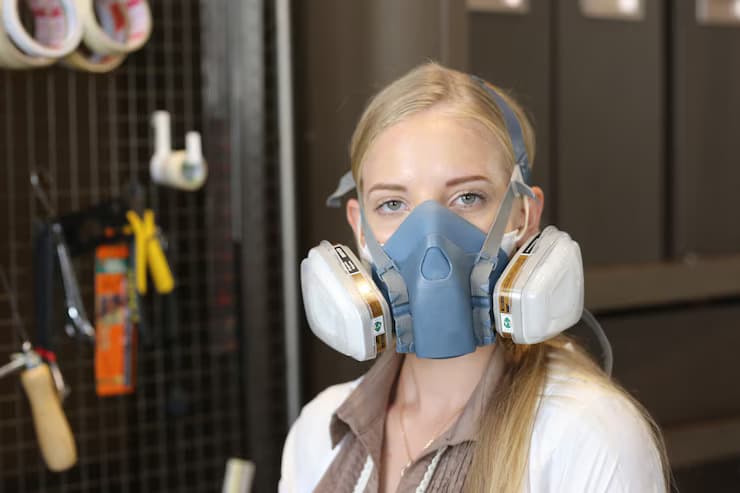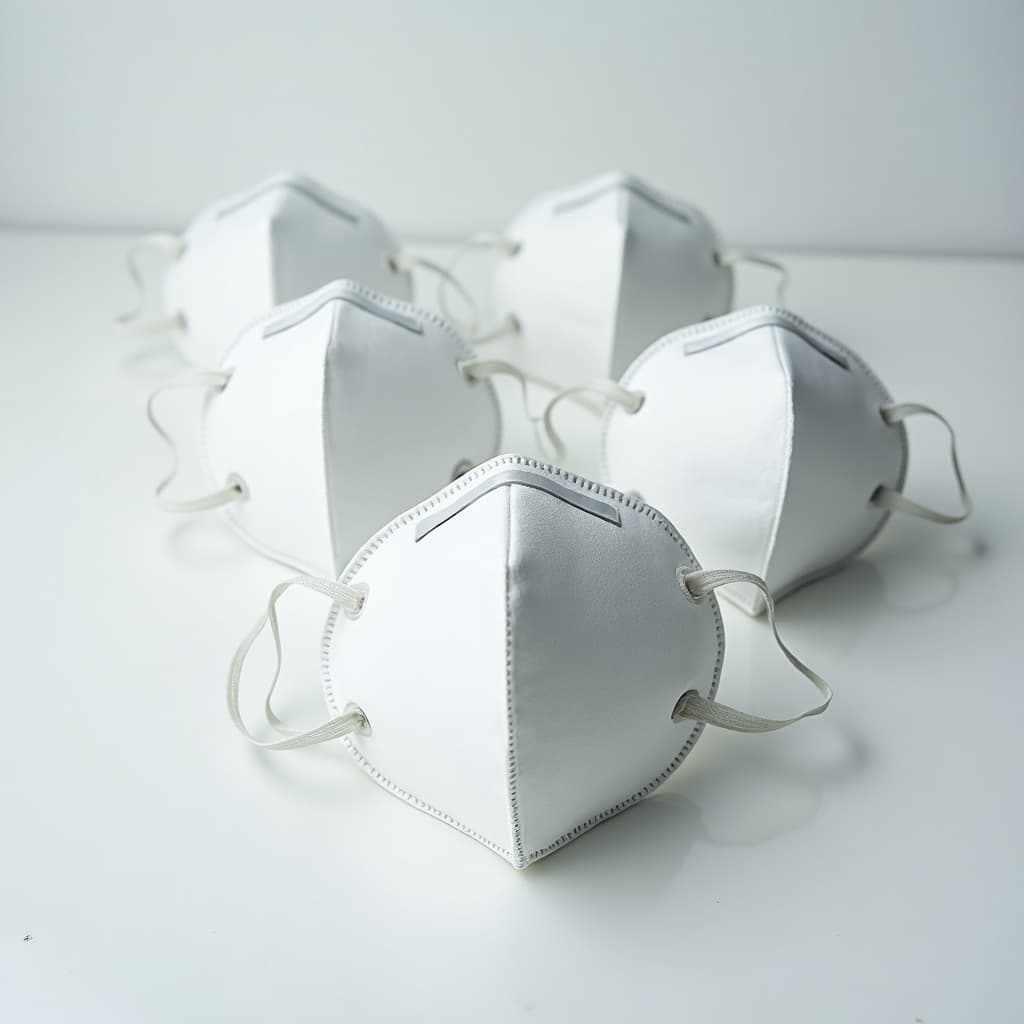OSHA Voluntary Respirator Use: Rules, Risks & QuickCare Solutions
Confused about OSHA's stance on voluntary respirator use? QuickCare ProTrain clarifies employer obligations for N95s and reusable respirators, helping you avoid pitfalls and ensure true compliance.
The Critical Distinction: Mandatory vs. Voluntary Respirator Use
Many HR and Safety Managers grapple with a common question: "If my employee *wants* to wear a respirator, even if it's not 'required' for a hazard, is that automatically 'voluntary use' with minimal rules?" The answer, according to OSHA, is nuanced and crucial for compliance.
Mandatory Respirator Use
OSHA mandates respirator use when:
- Airborne contaminants exceed Permissible Exposure Limits (PELs) or other specific occupational exposure limits.
- An employer requires respirators for certain tasks due to identified hazards, even if below PELs.
- Specific OSHA substance standards (e.g., lead, asbestos, silica) dictate their use.
In these mandatory scenarios, a full written respiratory protection program (as per 29 CFR 1910.134) is required, including medical evaluations, fit testing, training, and more.
True Voluntary Respirator Use
Voluntary use, in OSHA's eyes, only occurs when:
- The employer has conducted a hazard assessment and determined that no hazardous atmospheric exposure exists that would necessitate respirator use for protection.
- Employees choose to wear respirators for personal comfort (e.g., against nuisance dusts not exceeding PELs, pollen, or non-hazardous odors) or for added peace of mind.
Even under "voluntary" conditions, employers have specific responsibilities, which differ based on the respirator type. Understanding this distinction is the vital first step to correct compliance.
The Unskippable Foundation: Hazard Assessment for Voluntary Use
Before you can even consider respirator use "voluntary," OSHA requires a thorough workplace hazard assessment. Without this documented assessment concluding that no respiratory hazard *requires* protection, any respirator use intended to protect from an actual or potential hazard is, by default, considered mandatory use, triggering full program requirements.
Why is the Hazard Assessment Paramount?
A proper hazard assessment involves:
- Identifying potential airborne contaminants in your workplace.
- Evaluating employee exposure levels to these contaminants.
- Determining if engineering controls (e.g., ventilation) or administrative controls (e.g., work rotation) are sufficient to protect employees.
- Concluding whether mandatory respirator use is required. Only if it's NOT required can use be deemed voluntary.
The Risk of Misclassification
Claiming "voluntary use" without a proper hazard assessment is a significant compliance risk. If an OSHA inspection reveals a hazard that necessitates respirator use, your company could face citations and fines for lacking a mandatory program, even if employees were "voluntarily" wearing respirators.
QuickCare's Guidance: While QuickCare ProTrain specializes in efficient medical evaluations, we emphasize that these evaluations (whether for mandatory programs or for voluntary use of elastomeric respirators) must be part of a safety strategy built on a solid hazard assessment.
Voluntary Use of Filtering Facepieces (e.g., N95s)
This is the simplest scenario for voluntary use. Filtering facepiece respirators (FFRs) are disposable devices like N95s, N99s, or P100s, often referred to as "dust masks."
The "Appendix D" Rule
If your hazard assessment shows no mandatory respirator use is needed, and you allow employees to voluntarily use FFRs, your only OSHA requirement is to:
- Provide employees with the information contained in Appendix D of OSHA's Respiratory Protection Standard (29 CFR 1910.134).
Appendix D (titled "Information for Employees Using Respirators When Not Required Under the Standard") outlines:
- How to select a NIOSH-certified respirator.
- Proper use and limitations.
- The importance of a good face seal.
- Basic hygiene and maintenance (or disposal).
- That respirators themselves can become a hazard if not used correctly.
Key Exemptions for Voluntary FFR Use:
For this specific type of voluntary use (filtering facepieces only, after a "no hazard requiring respirators" determination):
- NO full written respiratory protection program is required.
- NO medical evaluations are required.
- NO fit testing is required.
- Employers are generally NOT required to pay for FFRs used voluntarily.
QuickCare's Role for FFRs: For true voluntary FFR use, your primary compliance task is distributing Appendix D. QuickCare ProTrain supports informed decisions by providing educational resources and efficient medical evaluations when they *are* required (i.e., for mandatory programs or voluntary elastomeric use).
Voluntary Use of Elastomeric (Reusable) Respirators
The rules change significantly if employees voluntarily use more complex, reusable respirators like elastomeric half-masks or full-facepieces with cartridges/filters. These respirators can place a greater physiological burden on the wearer and require proper care to prevent them from becoming a hazard.

The "Mini-Program" Requirements
Even if your hazard assessment confirms no mandatory use is required, OSHA mandates employers implement certain elements of a respiratory protection program if they allow voluntary use of elastomeric respirators. This is to ensure the respirator itself does not create a hazard. Key employer obligations include:
- Medical Evaluations: You must ensure each voluntary user of an elastomeric respirator is medically able to wear it safely. This evaluation must be performed by a Physician or other Licensed Health Care Professional (PLHCP). The employer is typically responsible for the cost of these medical evaluations.
- Proper Cleaning, Storage, and Maintenance: You must ensure that respirators are cleaned, stored, and maintained so that they do not present a health hazard to the user. This includes providing adequate facilities, time, and instruction for these activities.
QuickCare ProTrain: Your Solution for Voluntary Elastomeric Use Medical Evals
This is where QuickCare ProTrain becomes invaluable. If your employees voluntarily use elastomeric respirators, our fast, 100% online, OSHA-compliant medical evaluations ensure you meet this critical medical evaluation requirement efficiently and affordably.
- Ensure Medical Fitness: Our PLHCP-reviewed questionnaires help determine if an employee can safely handle the physiological demands of an elastomeric respirator.
- Meet OSHA Mandates: Easily comply with the medical evaluation component for voluntary elastomeric use.
- Cost-Effective & Convenient: Avoid expensive clinic visits and lost work time.
- Digital Record-Keeping: Maintain accessible proof of medical clearance.
Importantly, even for voluntary elastomeric respirator use, OSHA still does NOT require fit testing.
Navigating the "Gray Areas": Common Pitfalls for Employers
Understanding the nuances of voluntary respirator use can prevent costly mistakes and ensure genuine worker safety. Here are common questions and misconceptions that HR and Safety Managers often encounter:
"Can I just label respirator use 'voluntary' to avoid a full OSHA program if I haven't done a hazard assessment?"
No. This is a critical misunderstanding. True "voluntary use" under OSHA is only permissible after a documented hazard assessment confirms no airborne hazard exists that *requires* respirator protection. If a hazard is present that necessitates a respirator, then its use is mandatory, and a full respiratory protection program (29 CFR 1910.134) is required, regardless of whether an employee "wants" to wear one. Assuming voluntary use without assessment is a major compliance risk.
"If an employee brings their own elastomeric (reusable) respirator for 'voluntary' use, am I responsible for anything?"
Yes. If you permit employees to voluntarily use their own elastomeric respirators, OSHA still holds you responsible for ensuring:
- The employee is medically able to wear that respirator. (A medical evaluation is required, and the employer often pays).
- There are provisions for the respirator to be cleaned, stored, and maintained properly so it doesn't become a hazard itself.
Allowing use without these measures can lead to liability.
"Do I need to pay for respirators that employees use voluntarily?"
- Filtering Facepieces (e.g., N95s): Generally, no. OSHA does not require employers to pay for FFRs used voluntarily when no hazard necessitates their use.
- Elastomeric Respirators: While OSHA doesn't explicitly state employers must pay for the respirator *itself* if used voluntarily, they are typically responsible for the cost of the mandatory medical evaluation associated with its voluntary use. They also must ensure provisions for its maintenance.
"What if an employee refuses the medical evaluation for voluntary use of an elastomeric respirator?"
If an employee wishes to voluntarily use an elastomeric respirator, and a medical evaluation is therefore required by OSHA (and your company policy), they must complete it. If they refuse, they cannot be permitted to voluntarily use that elastomeric respirator in the workplace. This is to protect both the employee and the employer from potential health risks and liability.
"Can our company prohibit employees from voluntarily wearing respirators, even if no hazard exists?"
Generally, yes, an employer can establish a policy prohibiting the voluntary use of respirators, provided the policy is applied consistently and not for discriminatory reasons. Some reasons employers might consider this include concerns about improper use creating a false sense of security, interference with communication, or if the respirator itself could introduce a different type of hazard. However, it's often simpler to manage voluntary use correctly by following OSHA's guidelines (Appendix D for FFRs; medical evals and maintenance for elastomerics via services like QuickCare ProTrain).
QuickCare ProTrain Simplifies Compliance
Navigating these "gray areas" can be challenging. QuickCare ProTrain aims to provide clarity and practical solutions. For voluntary use of elastomeric respirators, our streamlined online medical evaluations remove a significant compliance burden, helping you make informed decisions that protect your employees and your business. For guidance on your specific situation, contact QuickCare.
QuickCare ProTrain: Your Partner in Smart Voluntary Respirator Use
Properly managing voluntary respirator use is key to maintaining a safe workplace and avoiding OSHA citations. QuickCare ProTrain offers targeted solutions to help you meet your obligations efficiently, particularly for the voluntary use of elastomeric respirators.

How QuickCare ProTrain Supports Your Voluntary Program:
- OSHA-Compliant Medical Evaluations: We provide fast, affordable, online medical evaluations for employees voluntarily using elastomeric (reusable) respirators, fulfilling a key OSHA requirement.
- PLHCP Review: Every questionnaire is reviewed by a Physician or other Licensed Healthcare Professional to ensure medical fitness.
- Reduced Administrative Burden: Eliminate the time and cost of scheduling in-person clinic visits.
- Digital Record-Keeping: Easily access and manage medical clearance certificates through our secure employer dashboard, crucial for demonstrating compliance.
- Enhanced Safety: By ensuring users of elastomeric respirators are medically fit, you prevent the respirator itself from becoming a hazard.
- Clarity and Guidance: We provide educational resources to help you understand all aspects of OSHA's respiratory protection standards.
While Appendix D is your main tool for voluntary N95 use, QuickCare ProTrain is your essential partner when reusable respirators enter the voluntary picture.
See How QuickCare Saves You MoneyBest Practices for Employers Allowing Voluntary Respirator Use
- Always start with a documented hazard assessment to determine if any use should actually be mandatory.
- Develop a clear written policy on voluntary respirator use. Outline employee and employer responsibilities and distinguish between requirements for FFRs vs. elastomeric types.
- For voluntary use of filtering facepieces (N95s):
- Mandatory: Provide all users with Appendix D of 29 CFR 1910.134. Consider an acknowledgment form.
- Not Required: Medical evaluations, fit testing, full written program.
- For voluntary use of elastomeric (reusable) respirators:
- Mandatory: Ensure users are medically evaluated (QuickCare ProTrain is your solution here!).
- Mandatory: Ensure respirators are cleaned, stored, and maintained properly to prevent them from becoming a hazard.
- Not Required: Fit testing, full written program (beyond these specific elements for voluntary use).
- Encourage NIOSH-approved respirators even for voluntary use.
- Keep records: Appendix D distribution acknowledgments (if used), and medical evaluation certificates from QuickCare ProTrain for elastomeric users.
- Educate employees on the limitations of voluntary use and the importance of following guidelines.
Frequently Asked Questions: OSHA Voluntary Respirator Use
QuickCare ProTrain helps clarify common questions for HR and Safety Managers regarding voluntary respirator use in the workplace.
Navigate Voluntary Respirator Use with Confidence and Compliance.
Don't let the complexities of voluntary respirator use create unnecessary risks or compliance headaches. QuickCare ProTrain provides the clarity and tools, like online medical evaluations for elastomeric users, to help you manage your program effectively and protect your workforce.
Ready to streamline medical evaluations for your voluntary elastomeric respirator users? Sign up for QuickCare ProTrain today!
